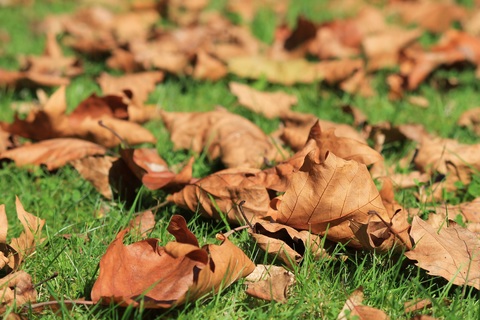Do you think that Spring is the only time to plant native grasses and flowers? If so, you’re not alone—that’s a common misconception. But Olathe landscapers will tell you it’s simply not true. With a little bit of planning and preparation once the calendar flips to Fall, you can start establishing warm season grasses and native wildflowers before it’s time to decorate your Christmas tree.
Advantages and Disadvantages of Cold Season Seeding
In fact, with native grasses in particular, dormant season seeding (Fall, in this case) imitates natural reseeding. Once frost sets in, things change a bit: frost seeding (which is the spreading of seed over frozen soil after the first killing frost) results in some natural stratification—which means that the seed and seed coat change enough to enhance germination. There’s also good seed-to-soil contact because of the moisture frost brings.
Patience is Still a Virtue
Even though this can all be done successfully in the Fall and Winter, most germination probably won’t occur until Spring; the exception to this might be some cool season species. This is when working closely with an Olathe or Johnson County landscaping company can be especially beneficial; not only can Olathe landscape architects help you understand which plants are native to the area, but they can also help you determine when and where to plant for the best results. Curious who you’ll work with if you choose us? Learn a bit about us here.
It’s Not All Good News
There are disadvantages to seeding during dormant seasons. Seed loss is possible, usually due to decay and consumption by wildlife. Weeds can also be an issue—in fact, the best time to start preventing weeds is when the weather is cooler, before the weeds germinate and start to take root. Smart tip: take the time to mulch well. Not only will doing so hinder weed growth, but it will help the soil retain moisture and provide protection for seeds and soil.
Curious and want to know more about native Kansas plants? The best thing to do is to talk to an Olathe landscape architect or Olathe landscaper. Another great resource is the Kansas Native Plant Society.
Other Important Cool and Cold Weather Landscaping Tips
What else should you be doing to make the most of these cool Fall days? Prune and trim perennial plants, shrubs, and hedges. Pruning trees can be a monster of a job—and sometimes it’s best left to a professional landscaper. Not sure if you should try it on your own or bring in an Olathe landscaping company? Ask us!
Once you’ve trimmed, make sure to remove clippings, branches, fall leaves, and other debris from your lawn. Why? Anything that covers your grass impedes sunlight, and when the sun’s rays can’t reach your grass, growth can be slowed or even stopped. This all leads to a lawn that looks more lackluster than lush—and might even leave dead or spotty patches in your yard.
Speaking of Mulch…
Mulch looks good, no doubt. But it also serves as a blanket of sorts for the soil and the roots below—and happy roots mean happy plants! Different areas require different mulch strategies; you want beds to have 1-2 inches of mulch, but you don’t want to cover the trunks of shrubs or trees. Once severely cold weather is imminent, tender and early-flowering plants will need extra protection. Consider staking around the plants and covering them with burlap to keep them as protected as possible.


